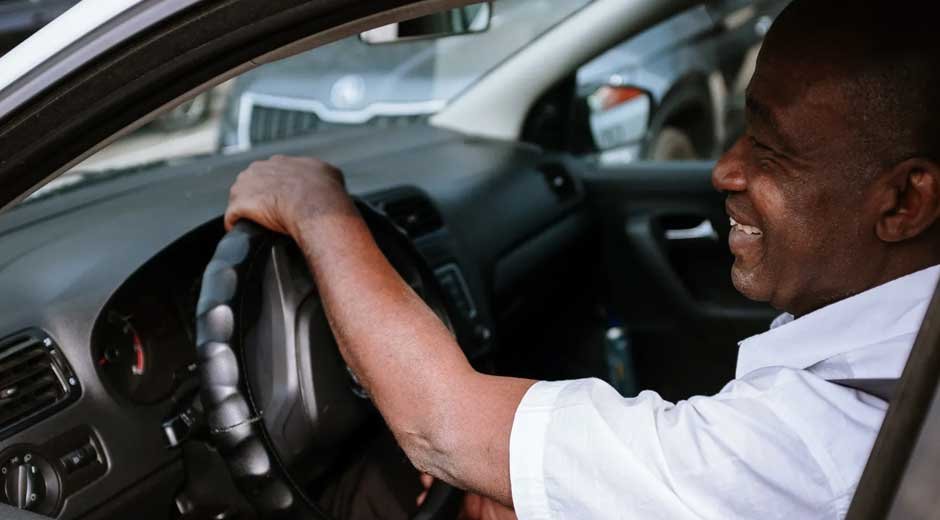Driving is a daily activity for millions, but it’s also one that demands the highest level of attention and responsibility. Whether you’re commuting to work, running errands, or embarking on a road trip, practicing safe driving is essential to keeping yourself and others safe. In this blog post, we’ll explore some of the top practices every driver should follow to ensure a safe journey on the road.
Contents
- 1 1. Always Buckle Up
- 2 2. Follow the Speed Limits
- 3 3. Avoid Distracted Driving
- 4 4. Practice Defensive Driving
- 5 5. Use Turn Signals Properly
- 6 6. Drive Sober
- 7 7. Keep a Safe Following Distance
- 8 8. Adjust to Weather Conditions
- 9 9. Maintain Your Vehicle
- 10 10. Take Regular Breaks on Long Drives
- 11 11. Obey Traffic Signs and Signals
- 12 In Conclusion
1. Always Buckle Up
Seat belts are one of the most effective ways to protect yourself in the event of an accident. According to the National Highway Traffic Safety Administration (NHTSA), seat belts reduce the risk of fatal injury by 45% for front-seat passengers and 60% for those in the back seat. Whether you’re driving around the corner or heading across the state, always buckle up—it’s the simplest step toward protecting your life and the lives of others in your vehicle.
2. Follow the Speed Limits
Speeding is one of the leading causes of accidents and fatalities on the road. Speed limits are set for a reason—they consider the road conditions, traffic, and the safety of all road users. While it might be tempting to go a little faster to make up time, exceeding the speed limit reduces your ability to react to sudden changes in road conditions, increases your stopping distance, and makes collisions more severe. Stick to the posted speed limits and adjust your speed when road conditions, like rain or snow, require you to slow down.
3. Avoid Distracted Driving
Distracted driving is a major concern and continues to rise with the increasing use of smartphones. Texting, talking on the phone, checking social media, or even adjusting your GPS can take your attention away from the road. It only takes a split second for an accident to happen. To prevent distractions, make sure your phone is out of reach, use hands-free devices, and focus solely on driving. If you need to make a call or send a message, pull over to a safe spot before doing so.
4. Practice Defensive Driving
Defensive driving is all about anticipating and reacting to potential hazards before they become a threat. This includes maintaining a safe distance from the vehicle in front of you, being aware of blind spots, and staying alert to other drivers’ behavior. Look out for erratic drivers, those who may be speeding or weaving in and out of lanes, and always give yourself enough time to react to unexpected situations. Being aware of your surroundings can help you avoid accidents and prevent risky situations from escalating.
5. Use Turn Signals Properly
Turn signals are an essential form of communication between drivers on the road. They let others know your intentions, whether you’re changing lanes or preparing to turn. Failing to use your turn signal can cause confusion and increase the likelihood of an accident. Always use your signals in advance—at least 100 feet before a turn or lane change—to give other drivers plenty of time to adjust.
6. Drive Sober
Driving under the influence of alcohol or drugs is a serious and dangerous offense that significantly impairs your ability to drive safely. Alcohol affects your judgment, slows your reaction time, and diminishes your focus, while prescription and over-the-counter medications can also hinder your driving skills.
If you’re planning to drink, always arrange for a designated driver or use public transportation. Never get behind the wheel when under the influence of any substances. If you find yourself facing charges for DUI in Salt Lake City, it’s crucial to seek legal assistance from a skilled DUI lawyer to protect your rights and navigate the legal process.
7. Keep a Safe Following Distance
One of the best ways to avoid rear-end collisions is to maintain a safe following distance. The general rule is the “three-second rule”: when the car in front of you passes a fixed point (like a sign or tree), you should be able to count to three before you reach the same point. In adverse conditions, such as bad weather or heavy traffic, increase your following distance to give yourself more time to react if the vehicle ahead of you suddenly stops.
8. Adjust to Weather Conditions
Weather conditions like rain, snow, fog, and ice can significantly affect road safety. When driving in inclement weather, it’s crucial to adjust your speed and driving behavior. Slow down, increase your following distance, and use your headlights for visibility. Avoid sudden movements, such as hard braking or sharp turns, as these can cause your vehicle to lose traction. If conditions are particularly hazardous, consider postponing your trip or finding alternative transportation.
9. Maintain Your Vehicle
A well-maintained vehicle is safer to drive. Regularly check your car’s tires, brakes, lights, and fluids to ensure everything is functioning correctly. Worn-out tires or faulty brakes can compromise your ability to stop in time or maintain control of your vehicle. It’s also a good idea to perform periodic check-ups and follow the manufacturer’s maintenance schedule to ensure that your vehicle is in peak condition.
10. Take Regular Breaks on Long Drives
Fatigue can impair your ability to drive safely, just like alcohol or drugs. When embarking on long road trips, take regular breaks to rest, stretch, and re-energize. If you feel drowsy or unfocused, pull over to a safe location and take a short nap or grab a coffee. It’s better to arrive later than to risk driving while tired.
11. Obey Traffic Signs and Signals
Traffic signs and signals are in place to regulate traffic flow and ensure everyone’s safety. Obeying stop signs, yield signs, traffic lights, and other road signals helps prevent confusion and accidents. Even if the road appears clear, always adhere to traffic control devices and proceed with caution. A failure to stop at a red light or yield at an intersection could result in serious collisions.
In Conclusion
Safe driving isn’t just about following the rules—it’s about staying alert, being prepared for unexpected situations, and prioritizing the safety of everyone on the road. By adopting these best practices, you can reduce the risk of accidents and make every trip safer for yourself, your passengers, and fellow drivers. Remember, the road to safety is paved with responsible choices, so always drive with caution, care, and consideration.








